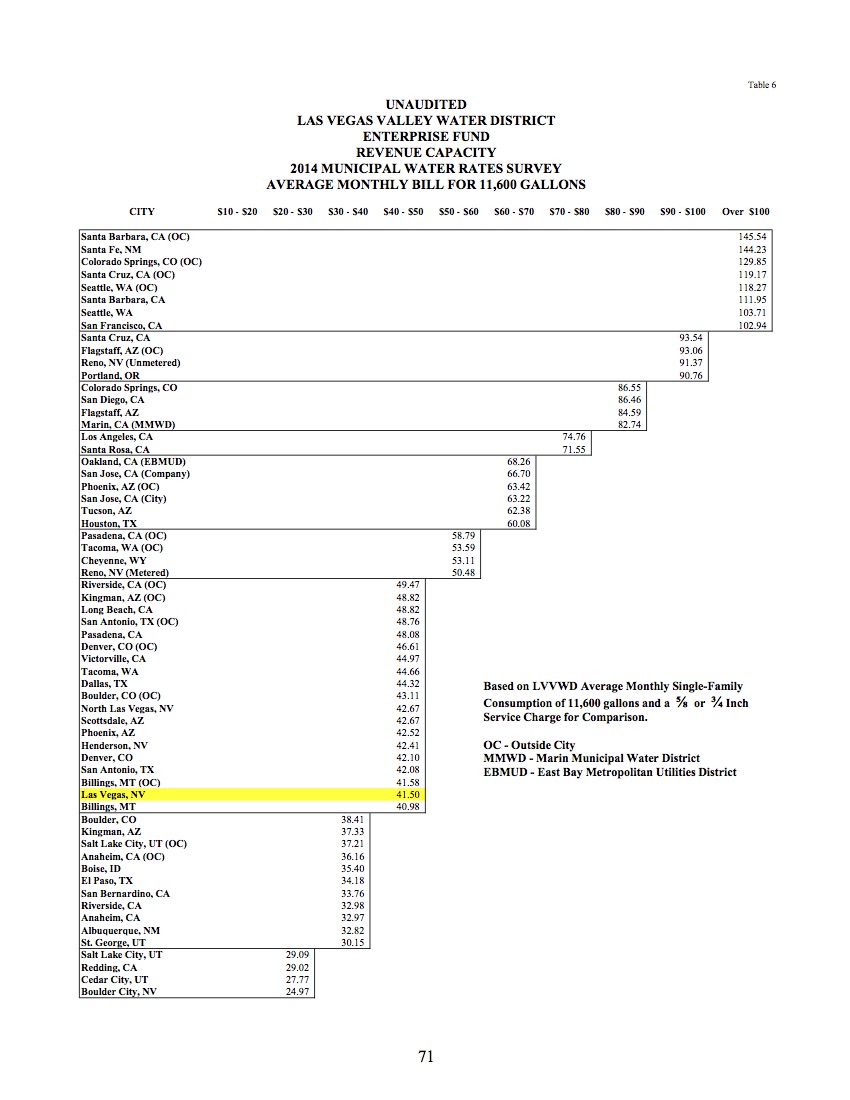Brett Walton’s annual U.S. municipal water rates survey is out. They show that, as post-World War II infrastructure nears the end of its useful lifespan, the cost of keeping things together is rising:
Continuing a trend that reflects the disrepair and shows no sign of slowing, the price of residential water service in 30 major U.S. cities rose faster than the cost of nearly every other household staple last year, according to Circle of Blue’s annual water pricing survey.
Brett’s analysis confirms the conservation story we’ve been hearing. Here’s a discussion of Austin, which is not alone:
Though rates are steadily increasing, residents are lowering bills by using less water.
Indeed, many households are conserving. Austin, Texas, for example, sold nearly 10 billion gallons less water in 2014 than in 2011, a 20 percent reduction. The city achieved this by dramatically increasing its rates for the highest-volume users while enforcing lawn-watering restrictions that were prompted by a record drought, according to David Anders, assistant director of finance for Austin Water.
The news for New Mexicans is that Santa Few has the highest water rates among the 30 cities surveyed, with an average of $157.78 using Brett’s methodology, a family of four using 100 gallons per person per day.
That’s consistent with a survey done by the Las Vegas Valley Water Authority, which shows Santa Fe with the second highest water rates among their sample of 70-plus western U.S. municipal water agencies:
Only Santa Barbara, Calif., is higher in the LVVWA survey.
My home town of Albuquerque has insanely cheap water.


The article makes an interesting point, that the pipes need to be there for someone who uses 1 or 100 or 1000 gallons per day, so it makes sense to move most of the related to pipes and the distribution system to a fixed fee, and really just charge the cost of production for the actual water use.